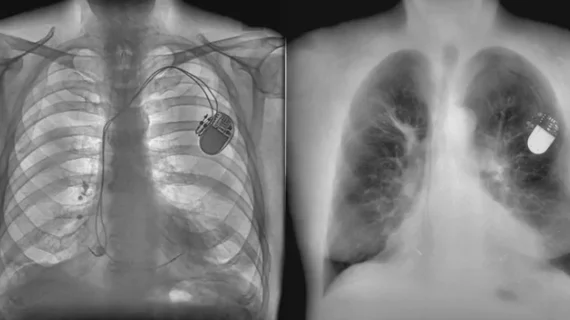Canada startup’s portable x-ray may replace lung cancer CT scans
KA imaging, a startup company in Ontario, Canada, has developed a portable imaging device called a high-resolution, multi-energy x-ray that may transform lung cancer screening. The device allows health care providers to look at an image of the body in different layers (bone versus soft tissue) to get a clearer image of the lungs, the CBC reported Nov. 15.
The device, which the company hopes could replace the need for CT scans and decrease radiation risk, is being tested for lung cancer screening at Grand River Hospital in Ontario.
"The reason from a clinical point of view why that's important is a lot of time the cancer is going to be hiding behind the rib cage, especially near the top of the lungs or the apex of the lungs, where it's covered by some of the bones," Amol Karnick, president and CEO of KA Imaging, told CBC.
The study at Grand River Hospital will involve up to 30 patients who have been diagnosed with cancer or lung nodules and are currently being monitored by the imaging department, according to the article.
"It's faster, there is less cost than a CT scan and it's a portable technology as well, so it could be brought to the patients. So if there are patients that could not be moved in different areas of the hospital, this is a mobile device that can be taken to the patients," Carla Girolametto, director of research, innovation and clinical trials at Grand River Hospital, told CBC.
Read the entire article below.

